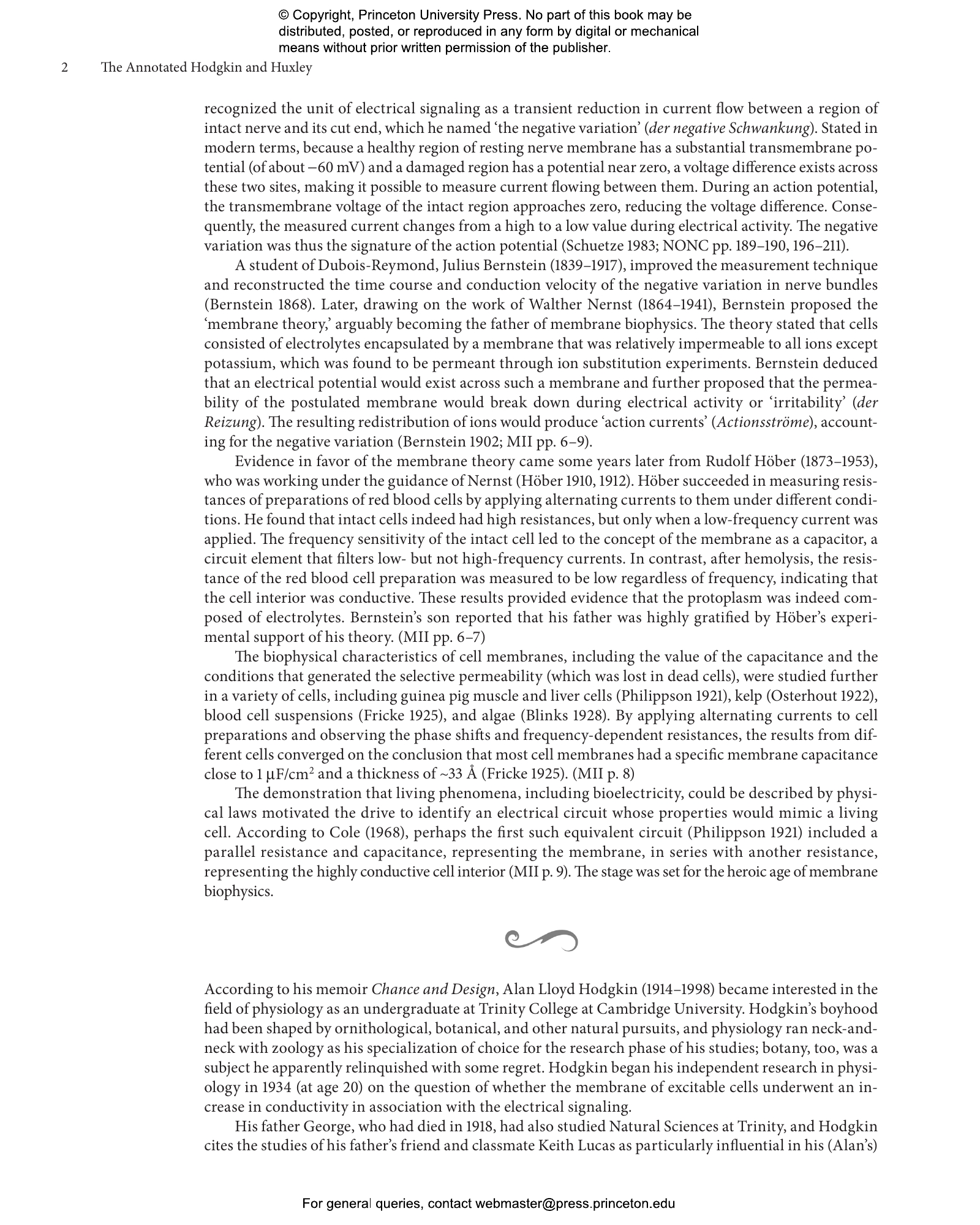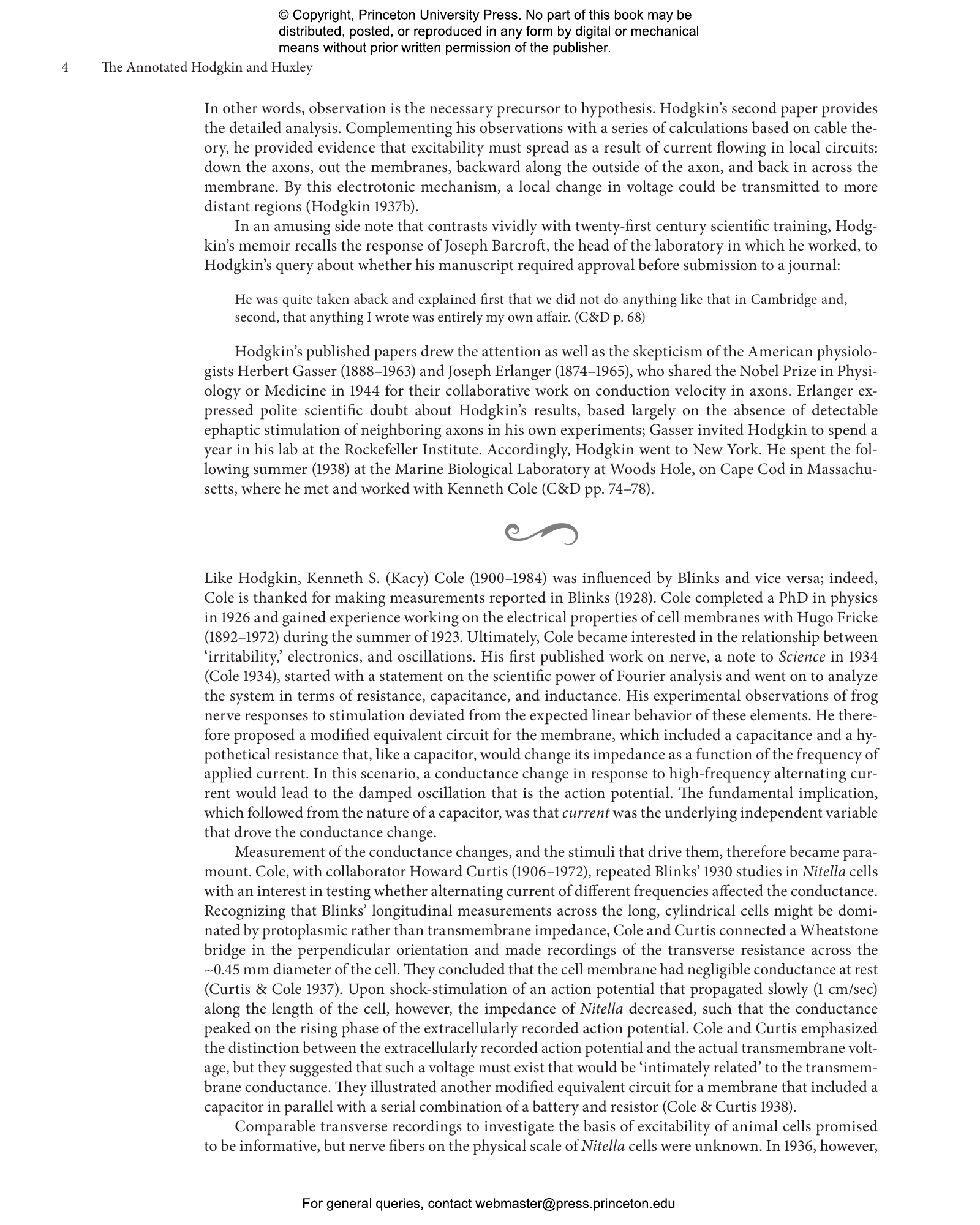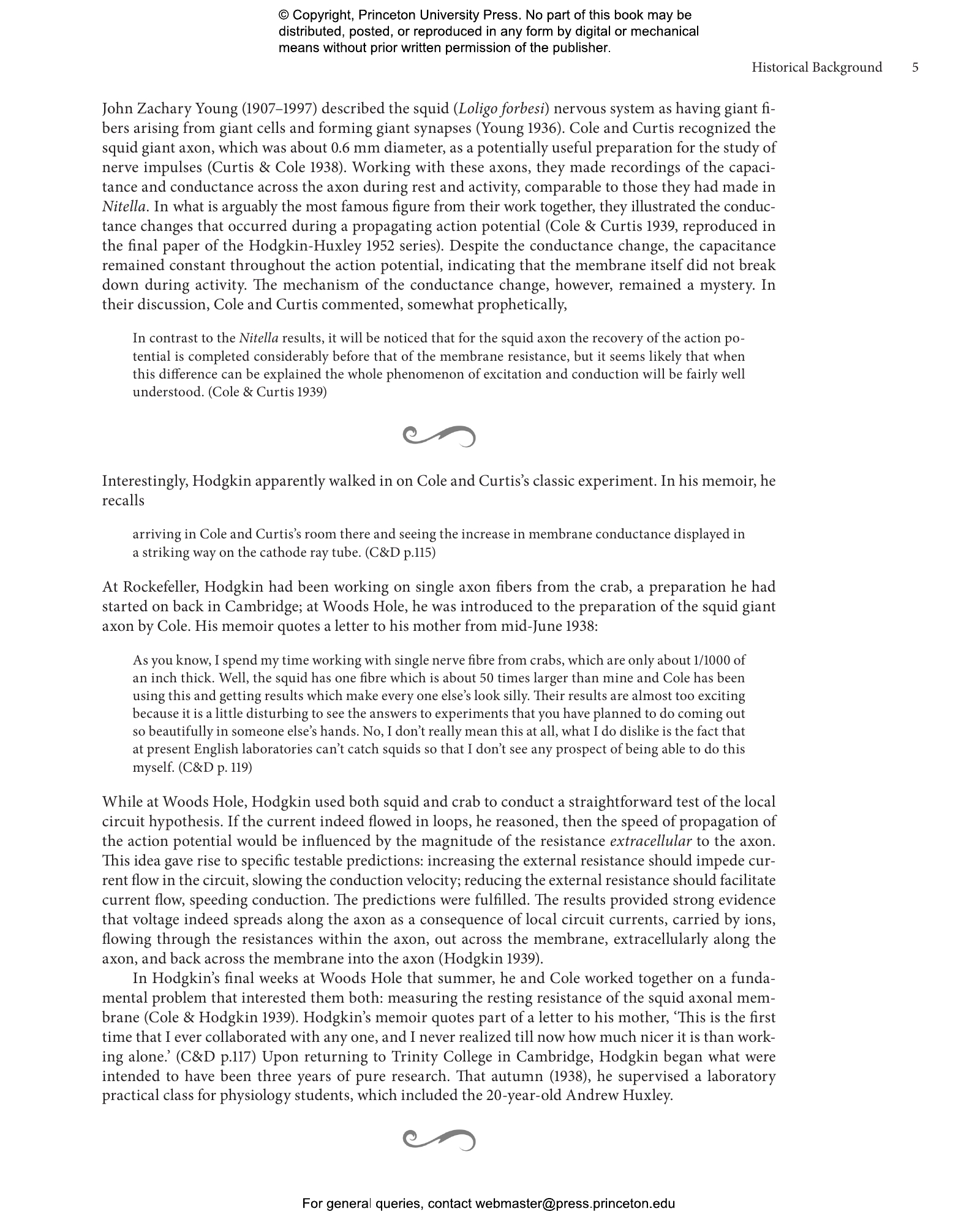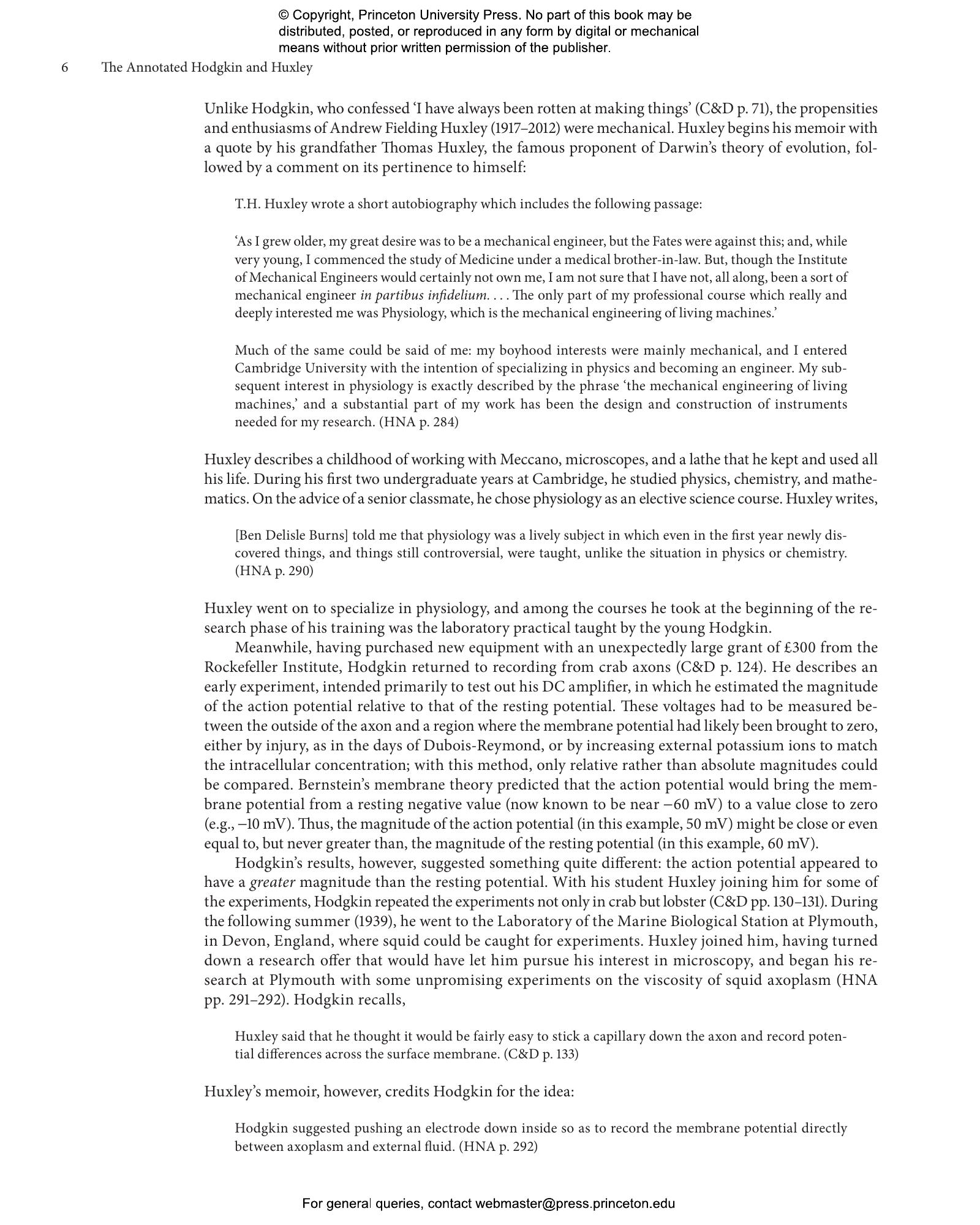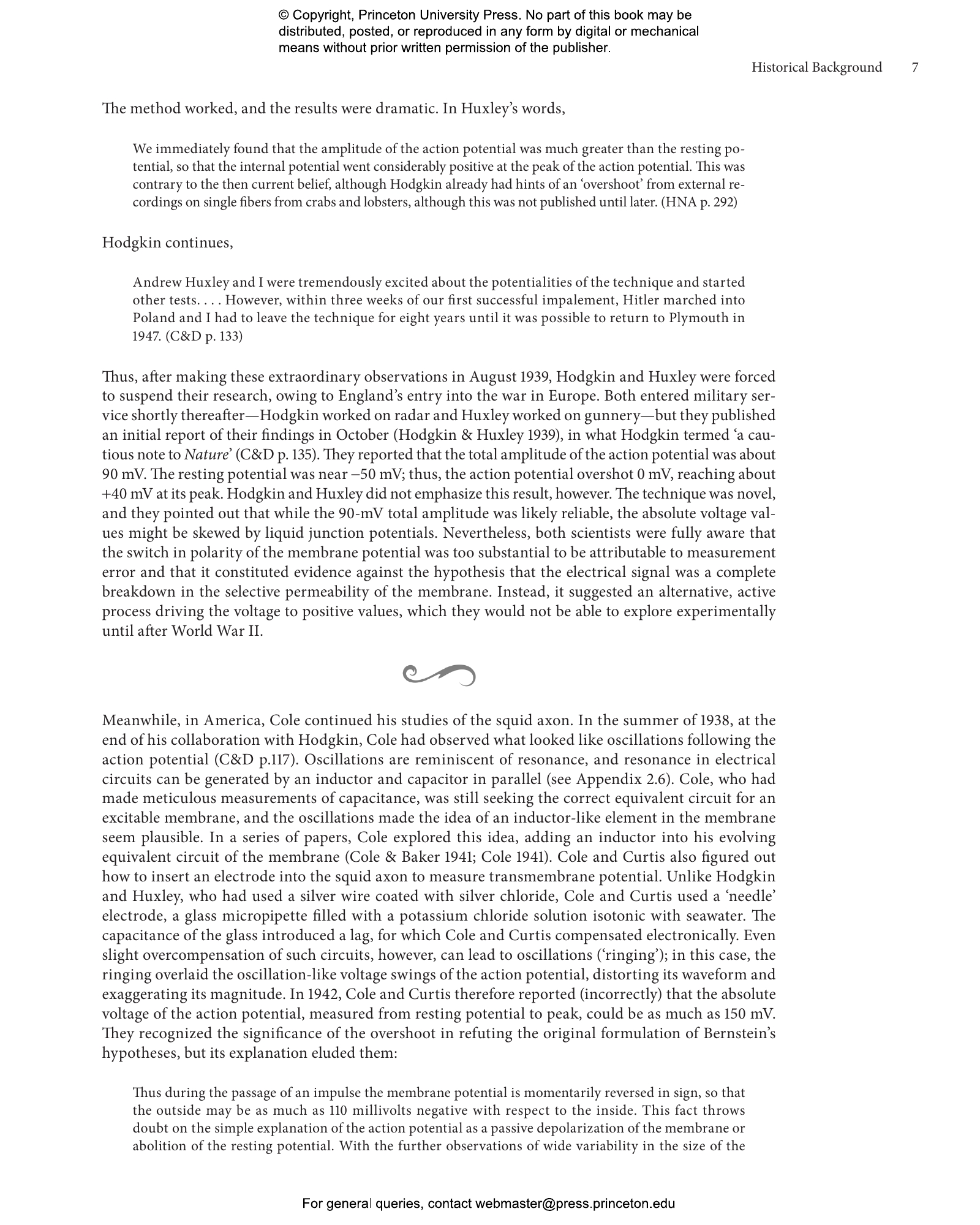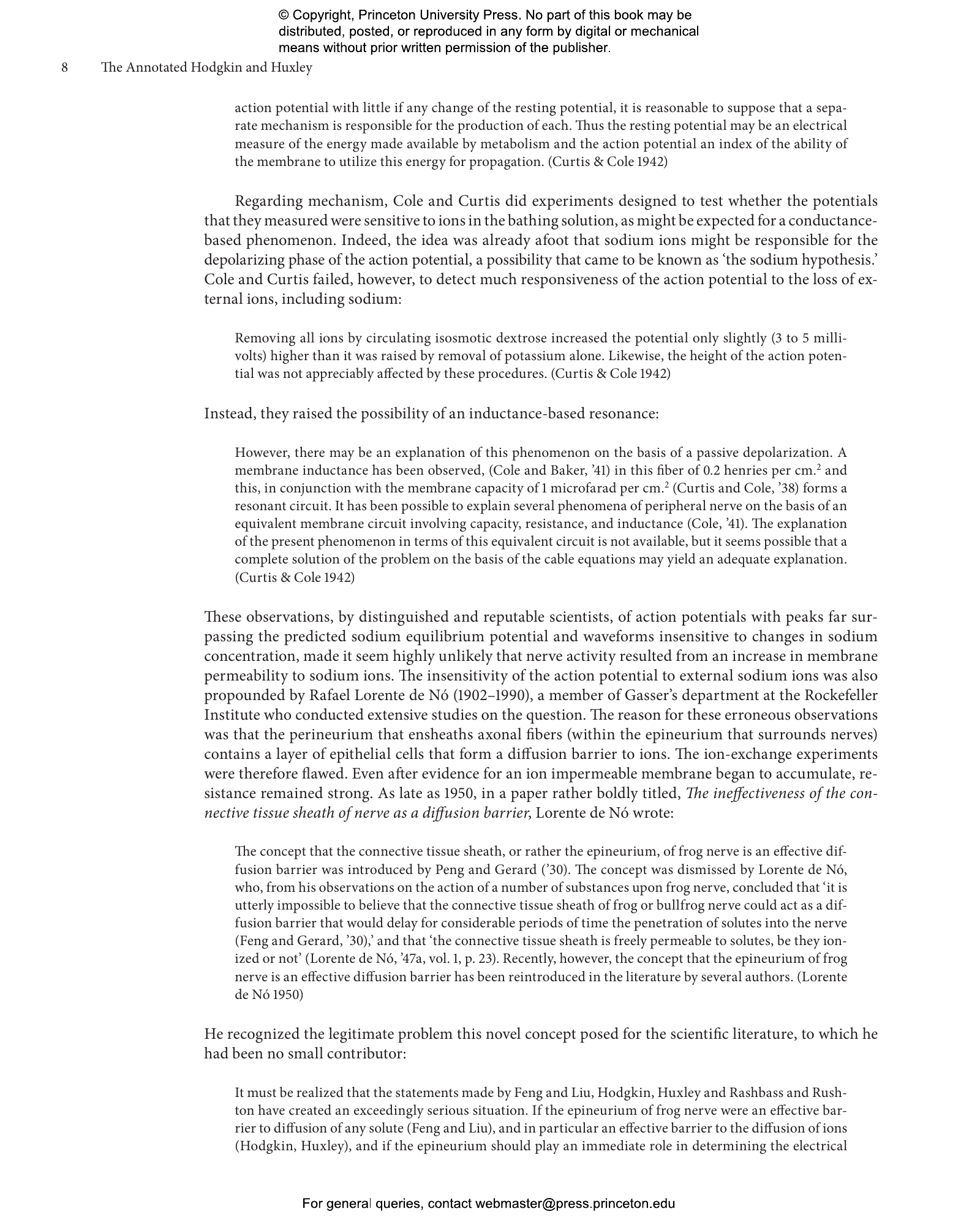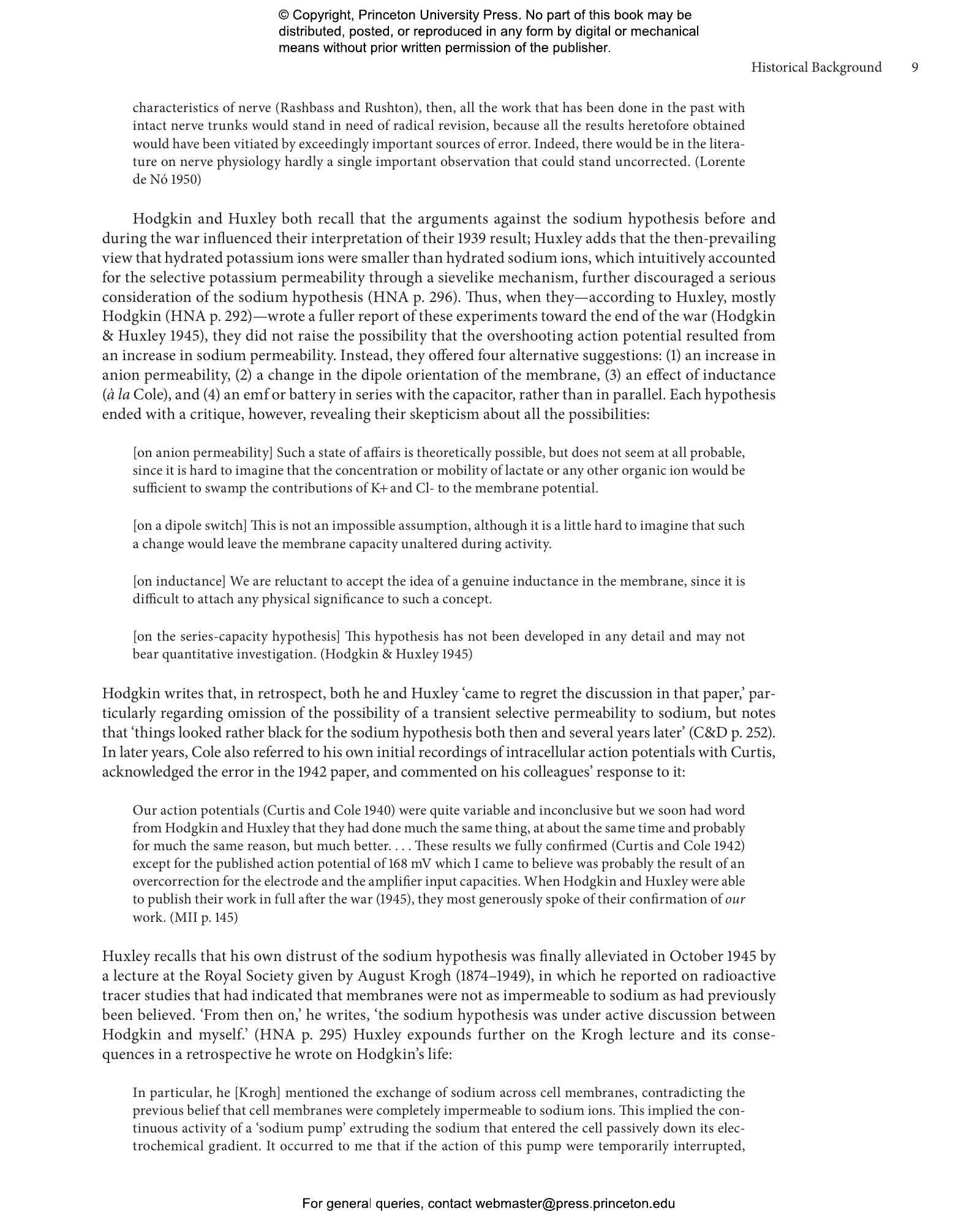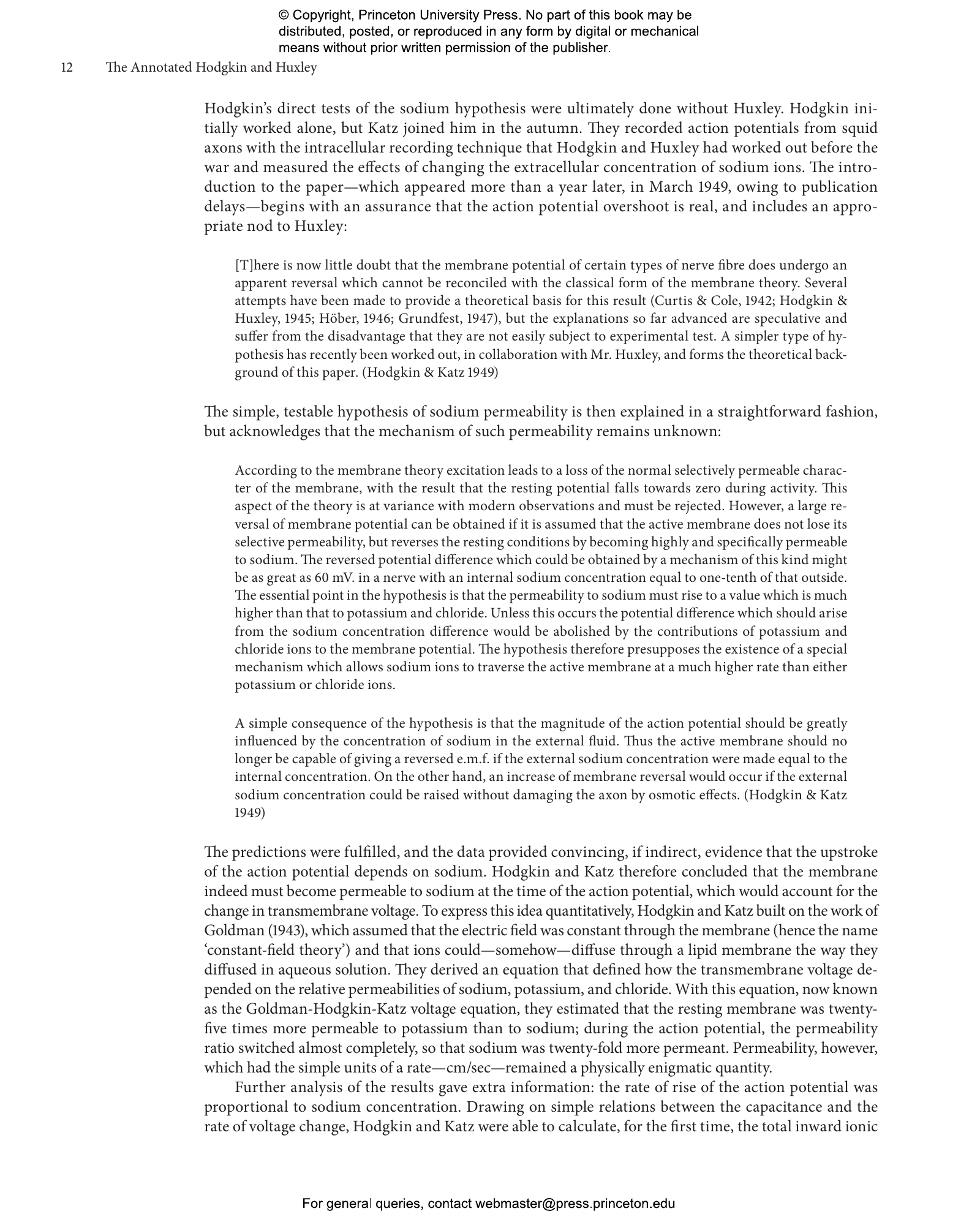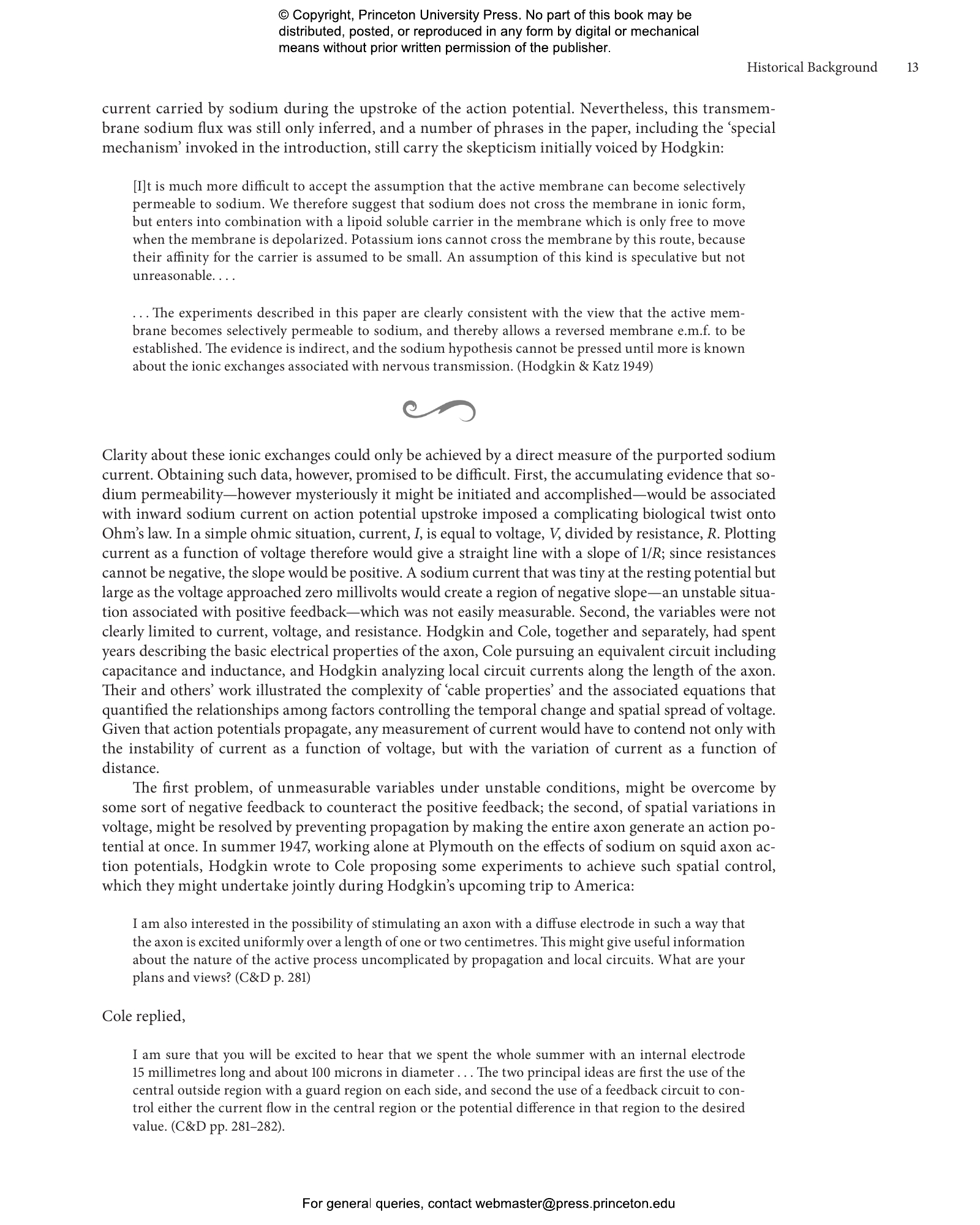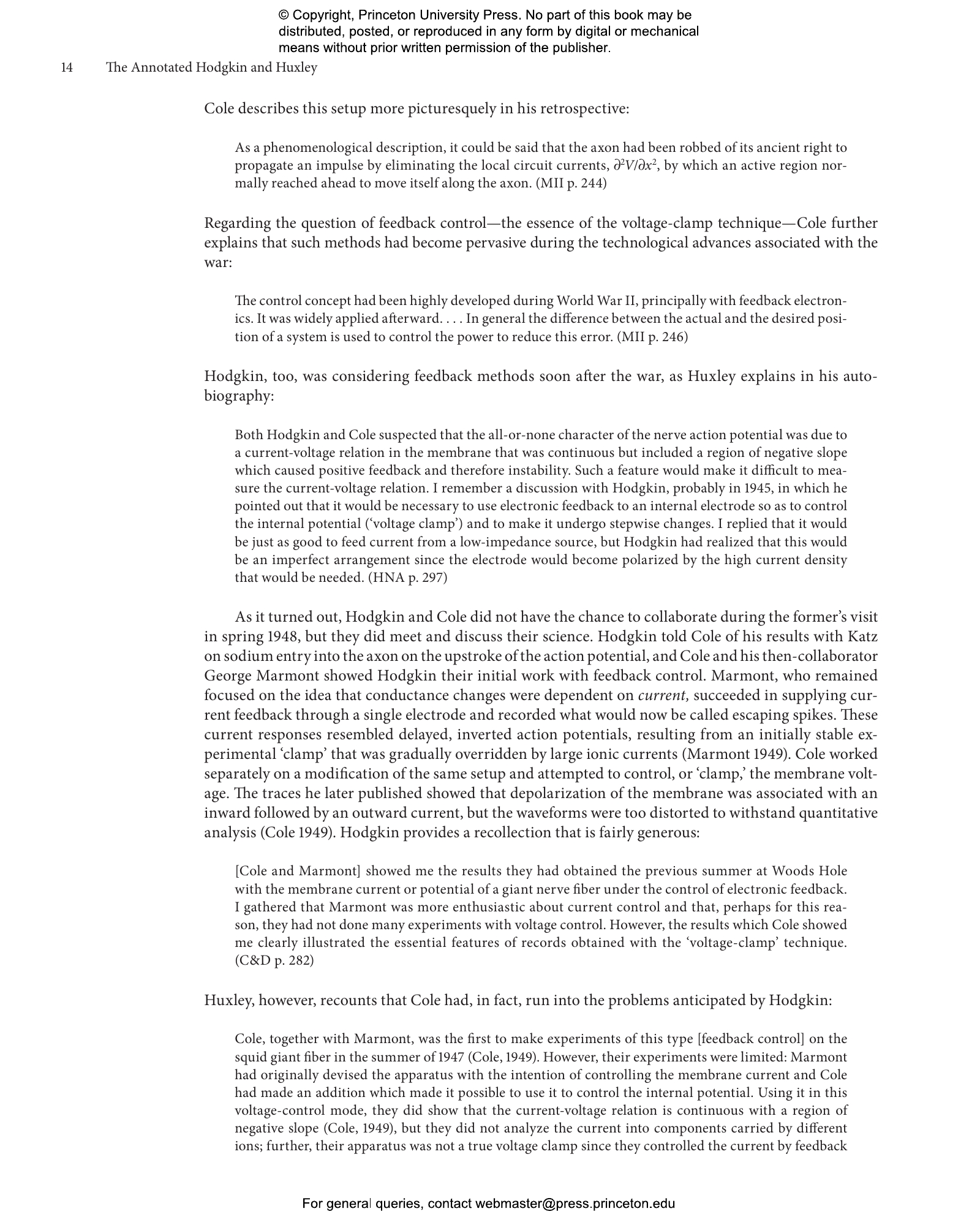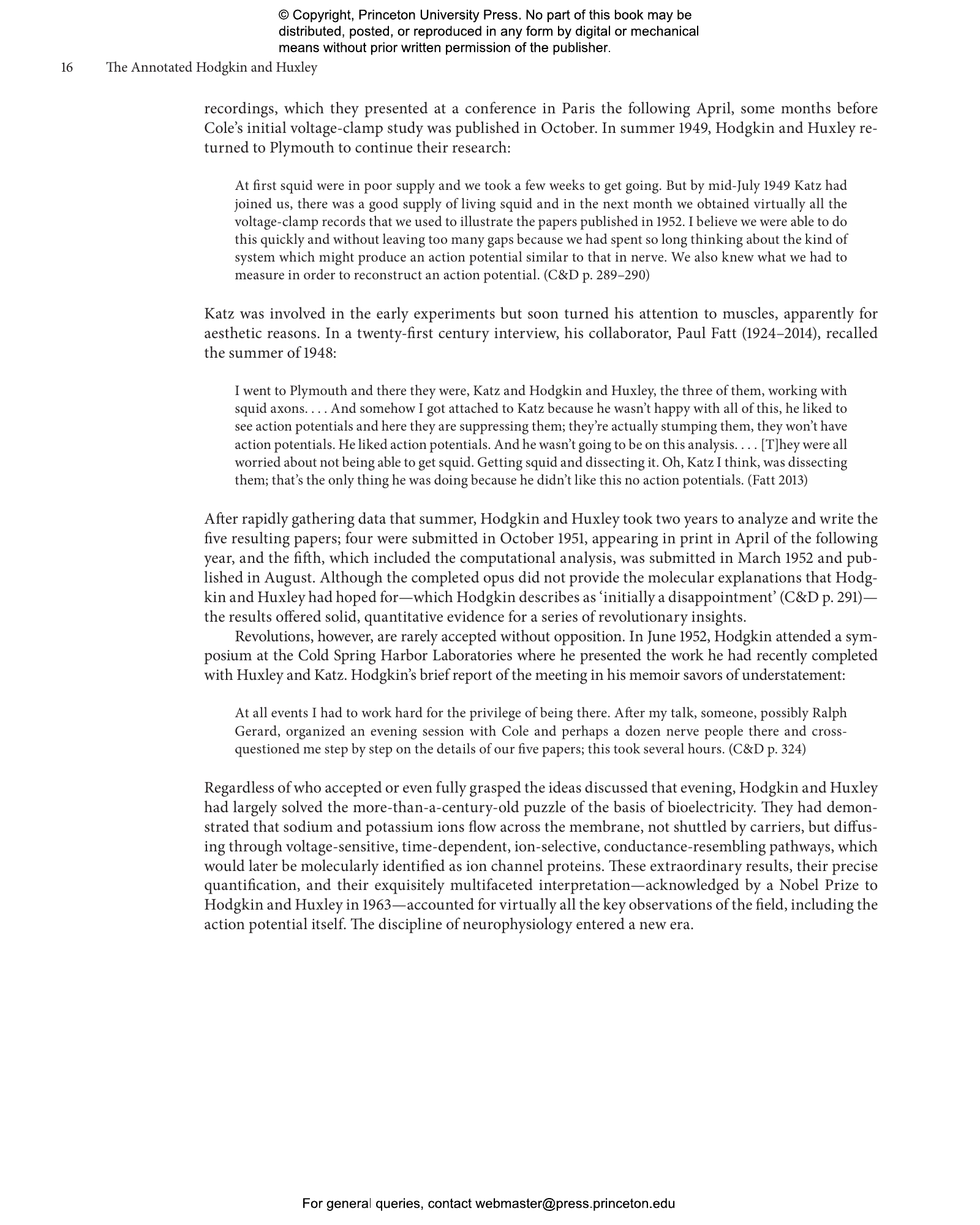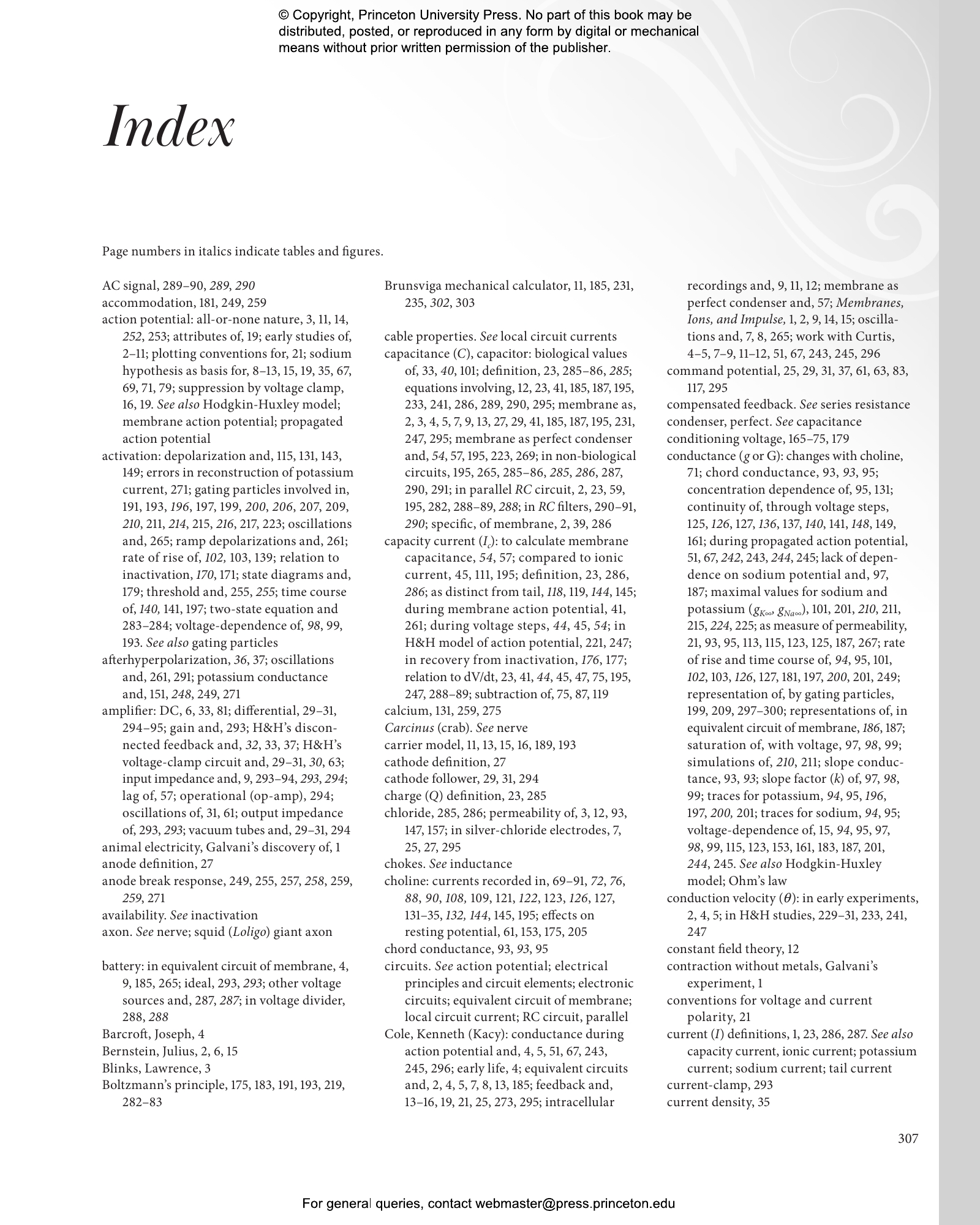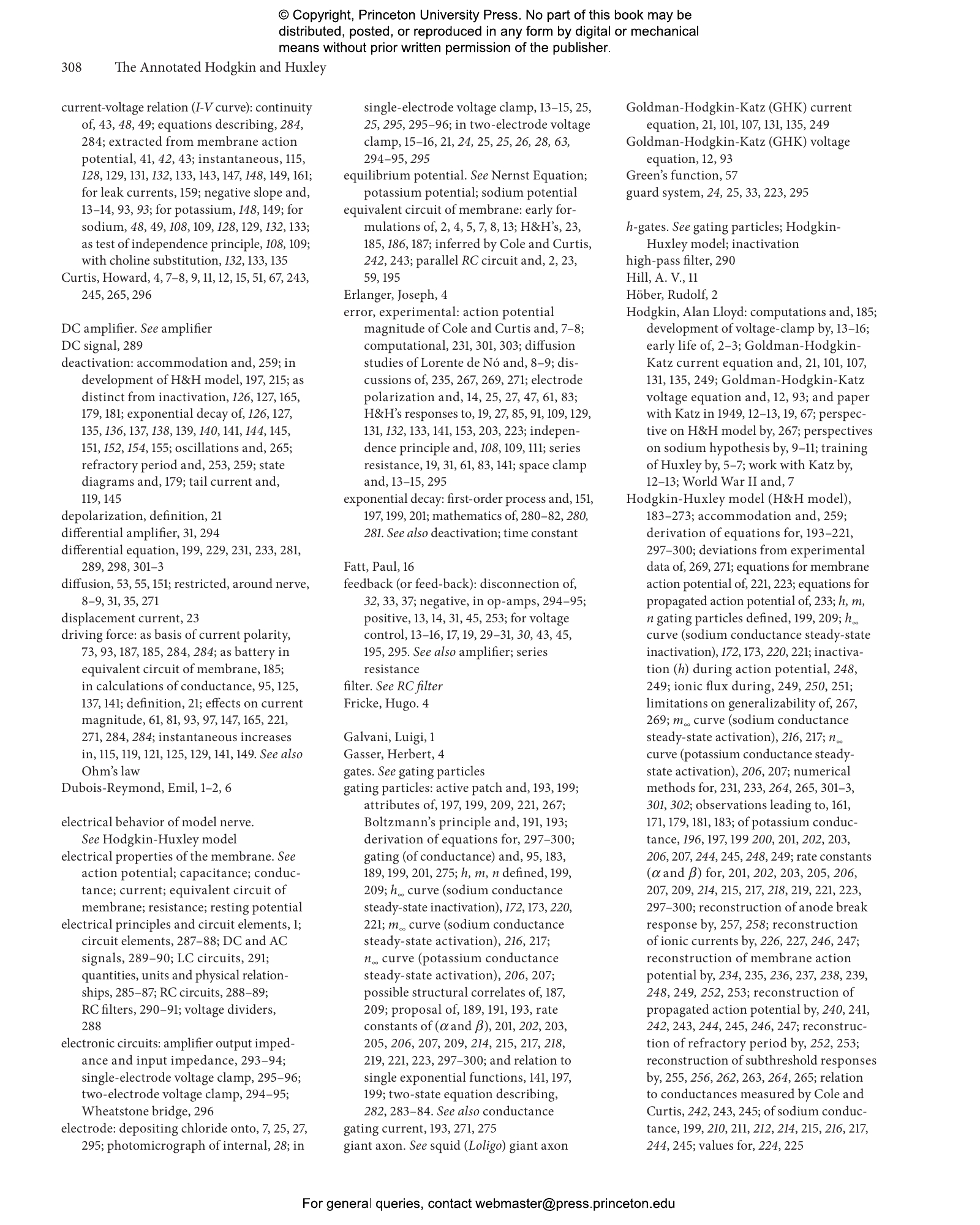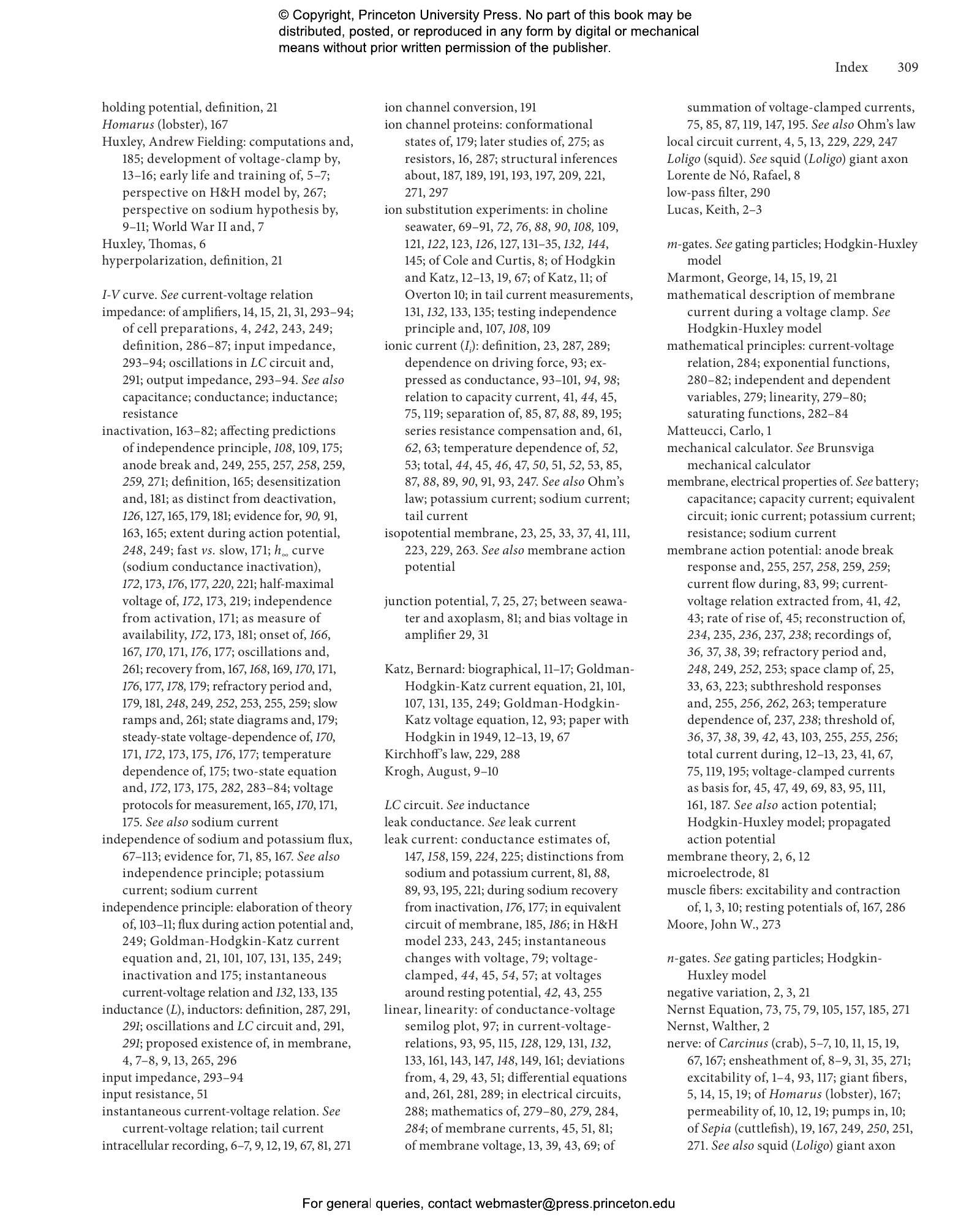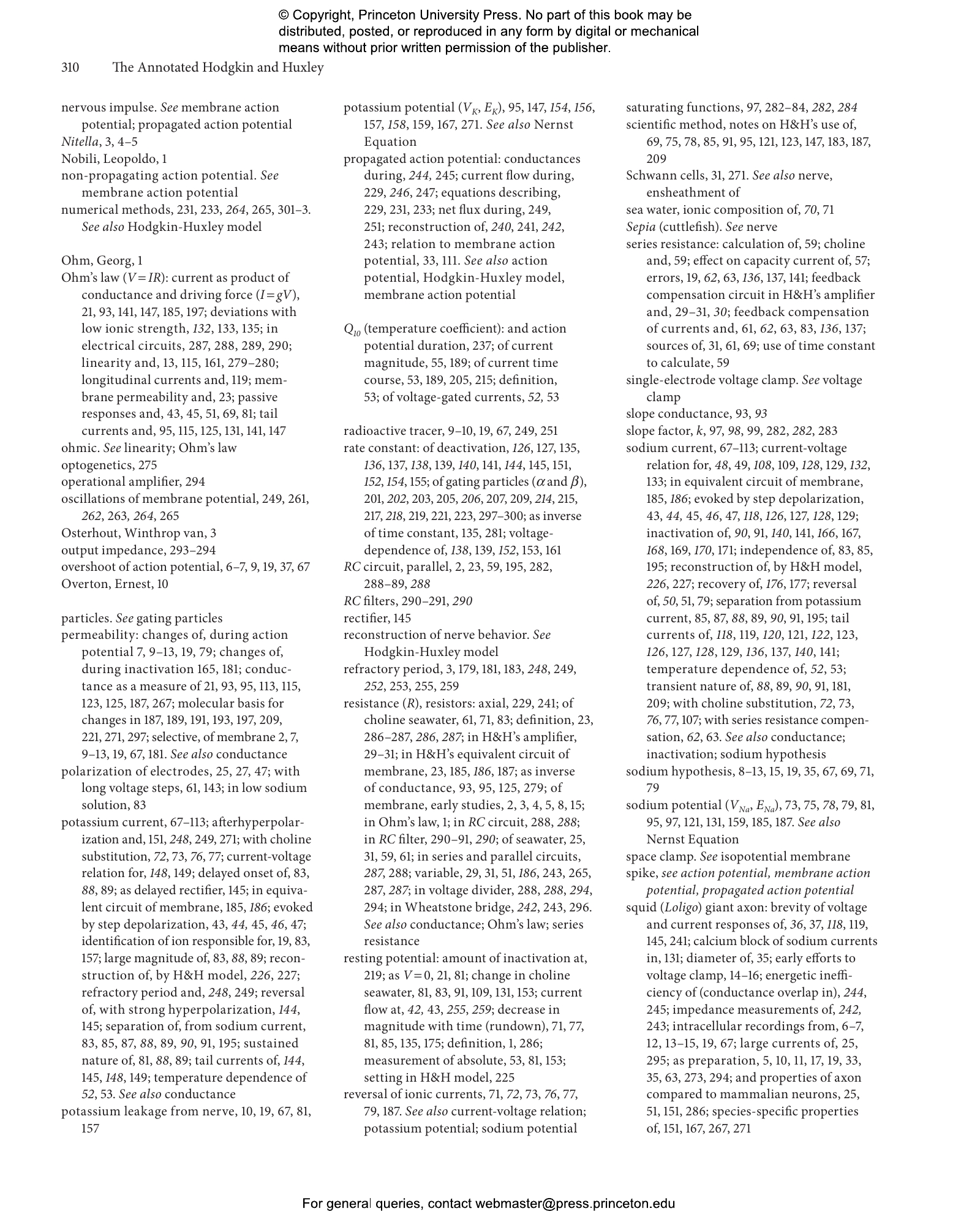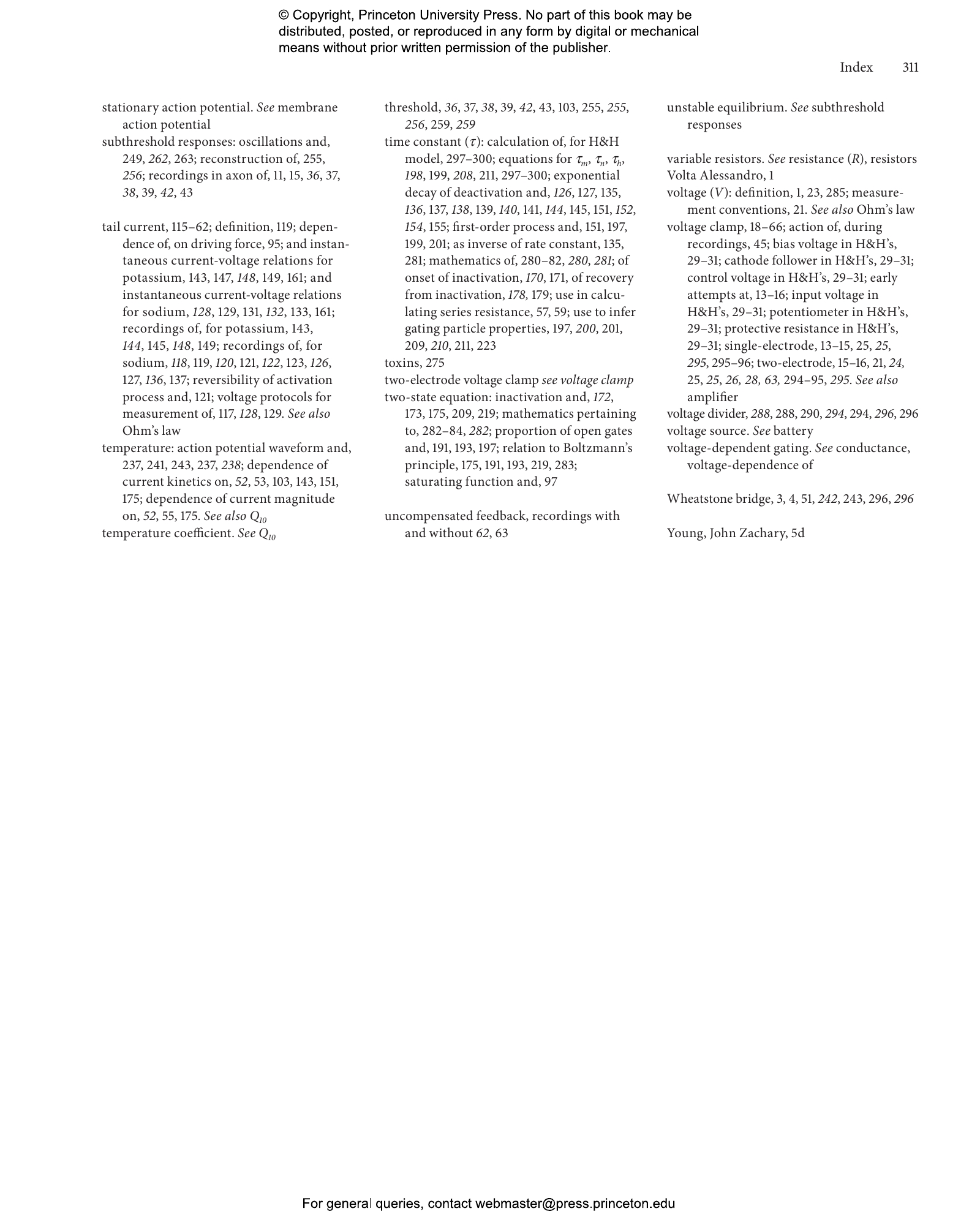The Annotated Hodgkin and Huxley: A Reader's Guide


Hardcover
- Price:
- $120.00/£92.00
- ISBN:
- Published (US):
- Jan 11, 2022
- Published (UK):
- Mar 8, 2022
- Copyright:
- 2021
- Pages:
- 328
- Size:
- 8 x 10 in.
- 89 b/w illus.
- Main_subject:
- Neuroscience & Psychology
Paperback
ebook
The origin of everything known about how neurons and muscles generate electrical signals can be traced back to five revolutionary papers, published in the Journal of Physiology in 1952 by Alan Hodgkin and Andrew Huxley. The principles they revealed remain cornerstones of the discipline, summarized in every introductory neuroscience and physiology course. Since that era, however, scientific practice, technology, and presentation have changed extensively. It is difficult for the modern reader to appreciate Hodgkin and Huxley’s rigorous scientific thought, elegant experimental design, ingenious analysis, and beautiful writing.
This book provides the first annotated edition of these papers, offering essential background on everything, from terminology, equations, and electronics, to the greater historical and scientific context surrounding the work. The original journal pages are displayed opposite detailed notes explaining content, process, and background, with copies of the figures replotted according to modern conventions. Indispensable for scientists, teachers, and trainees alike, The Annotated Hodgkin and Huxley makes an essential body of knowledge—and an unparalleled approach to research—accessible to a new generation of readers.
- Reproduces the original articles paired with extensive annotations on facing pages
- Replots figures with modern conventions of data display
- Explains the development of the voltage clamp and the discovery of ionic currents and action potential generation, foundational to the study of neuroscience and physiology
- Summarizes the history of electrophysiology leading to Hodgkin and Huxley’s work
- Includes appendices on relevant concepts from mathematics, physics, electronics, chemical kinetics, and numerical methods



